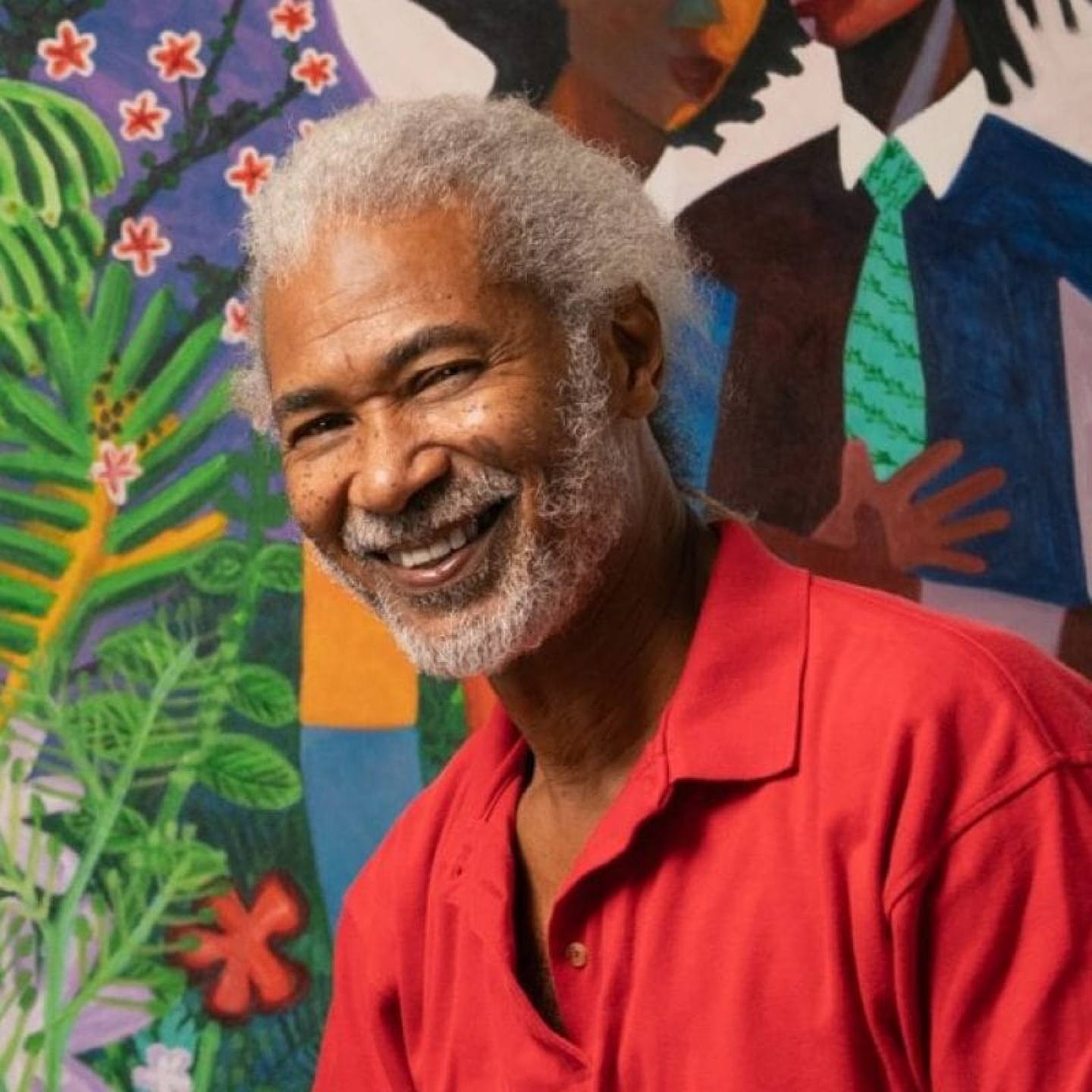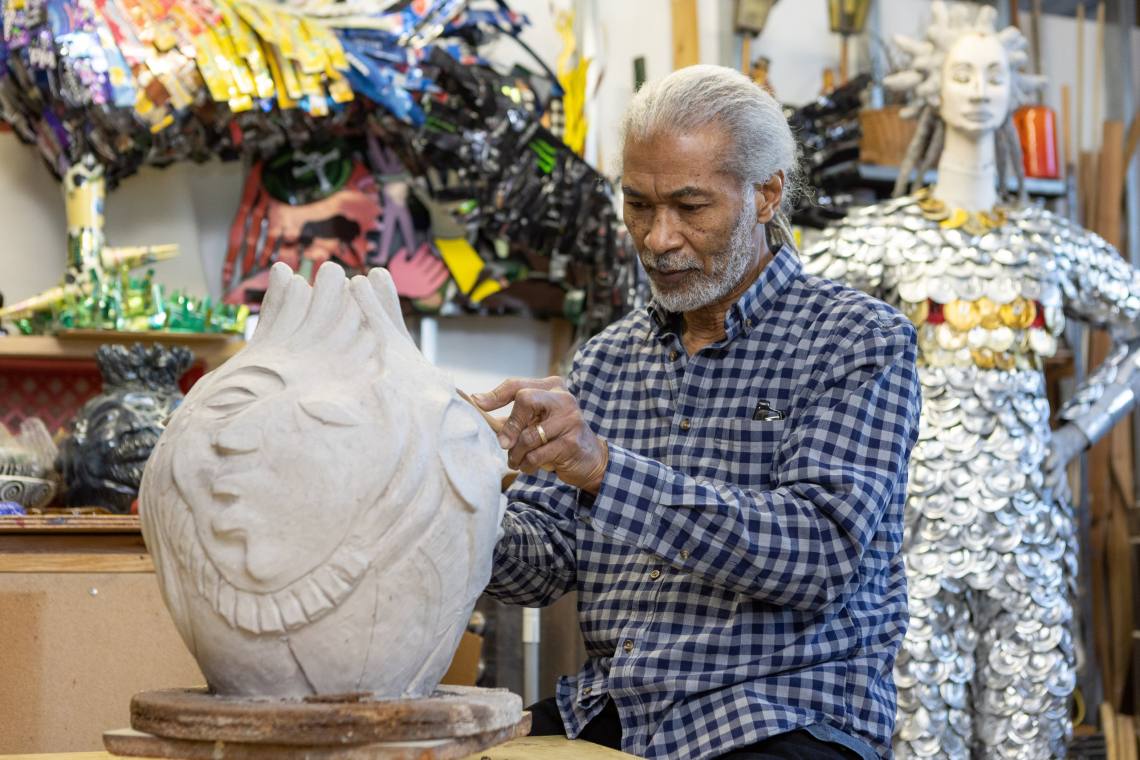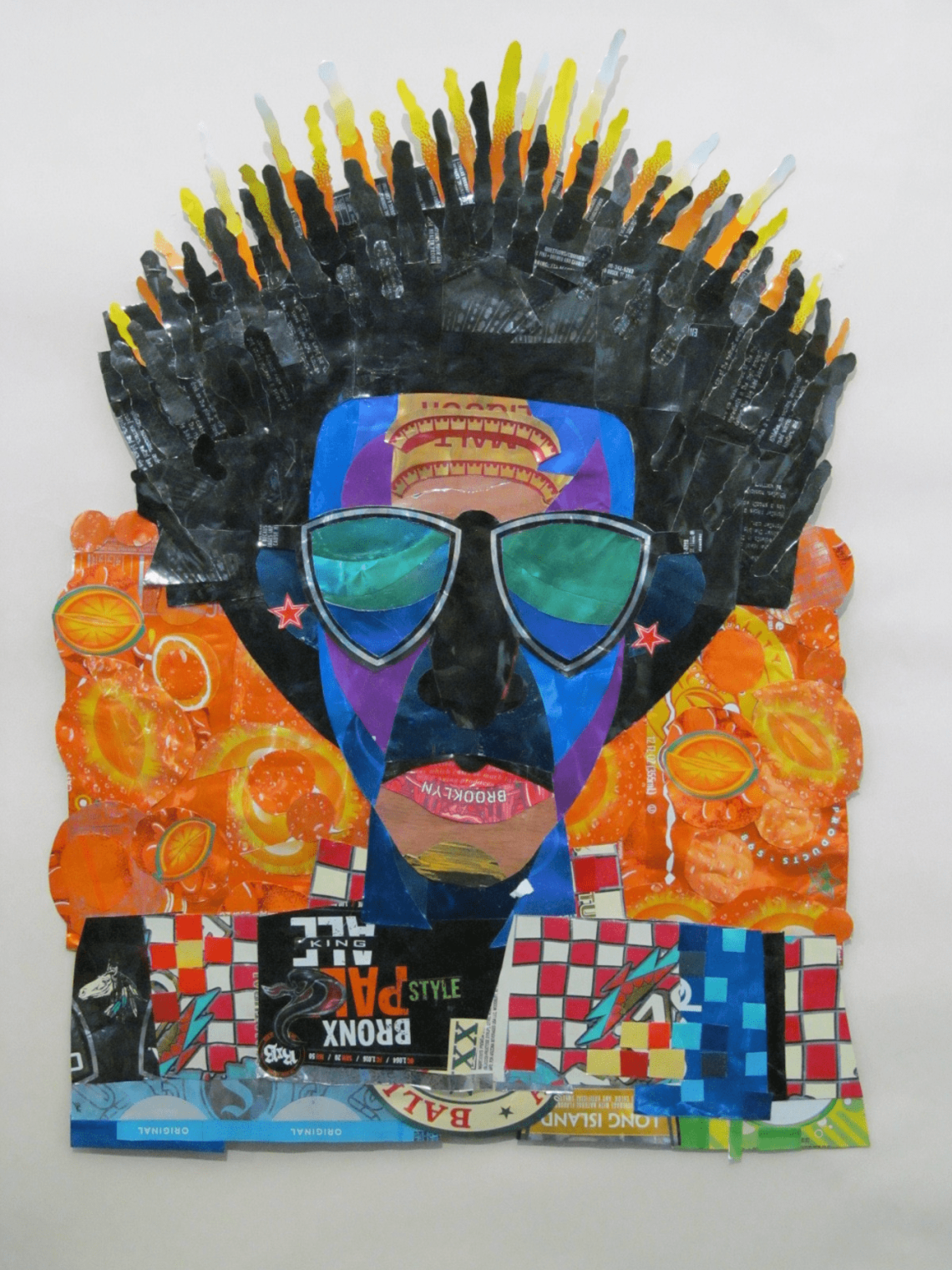Mastering and celebrating mixed-media arts through a Jamaican lens
Mastering and celebrating mixed-media arts through a Jamaican lens
Amsterdam News – New York
by BRENIKA BANKS
April 4, 2024
Caribbean, especially Jamaican, parents don’t usually view their children’s pursuits in the arts as sustainable careers. Hospitality and healthcare are generally viewed as guaranteed money-making fields (sites like Simplyhired.com mainly recruit Caribbeans for such positions). But arts and culture do exist in Jamaica, and the tropical island has been known to inspire its native artistic population to study and make artsy careers.
“It was just a passion…I didn’t even know you can make a living off arts,” said Noël Copeland. The Jamaican-born painter, sculptor, and mixed-media artist received his master’s degree in 1979 from the Pratt Institute in Brooklyn, at 24 years old. “I said, ‘Well, I might as well go to the best art school,’ which I didn’t know was the most expensive art school…I just knew I don’t want to be in no corporate business, so I went to art school.”
Copeland, now 69, paints, draws, sculpts, and makes ceramics—his specialties in his Brooklyn Navy Yard studio. His skillset protects him from boredom because he can switch between art forms. “The only thing is, I run out of time.”
Copeland shared his gratitude for a Caribbean club at Pratt. He recalled often being the only Black student in classes. According to the National Society of High School Scholars and topuniversities.com, countries such as Italy, Spain, the UK, and the U.S. are listed as having best fine arts colleges in the world; no Caribbean country is on their lists. Copeland believes his challenges as a youth dealing with race were worth it; he loves his passion for art. He strategically learned different forms to actively work and earn money.
Copeland aims for his art to bridge an important gap. “The gap in terms of social, in terms of race—[I want to] use art to bring people together,” said Copeland. He revels in works that are asexual and aren’t specific to race or ethnicity.
His pieces maintain African and Jamaican roots, a foundation that he believes must be celebrated daily. “It’s good to celebrate the culture, but it should be an ongoing thing,” said Copeland. He admires conscious Jamaican leaders like Marcus Garvey for Black history and knowledge.
As a leader himself, Copeland is keen on having more people exposed to public art. He understands there are many individuals, Black people in particular, who don’t frequent museums and other art spaces. “I like the idea of public art, bringing art to people,” said Copeland. “That’s why I got into public art.” He has public art pieces in two MTA subway stations, Public School 121’s lobby, and public housing lobbies.
Copeland has been praised for his creations, which explore ideas that inspire, according to Carli Beseau, vice president of impact and partnerships at the Brooklyn Navy Yard.
“Noël’s unique artwork and bespoke products reflect the innovative spirit that speaks to the legacy of the Brooklyn Navy Yard,” said Beseau. “He approaches his multimedia practice through the lens of a creative entrepreneur…Noël participates in many of our programs and is a wonderful member of the Navy Yard’s maker community.”
Copeland starts creating a sculpture by how his hands and mind perceive mental images from beginning to end. “I have a sketch in my mind, and then the journey is important,” he said. “What I discover along the way, how I do it…you have to go with the flow; it’s like a meditation.”
He surely contemplated and meditated while creating his Goddess piece, made from all-recyclable items. It’s one of his favourite pieces, mainly because of the effort put into creating her.
Copeland said his art can improve the world. “Art is like looking at a flower,” said Copeland. “It should be something to stimulate people’s mind or imagination; bring joy to them.” Even with political works, like his carriage piece based on the slave trade that has enslaved people on the bottom, Copeland still aspires to make people hopeful. “My art should help people feel better for themselves, feel better about the world,” he said. “It should bring something good to people, something good to your life.” He looks forward to his art enriching the lives of those who encounter it.
Images from the Pratt Institute and Brooklyn Navy Yard
April 2024
Copyright ©️ Expérience Jamaïque. Tous les droits sont réservés. Conçu et développé par LucraLux Marketing.







